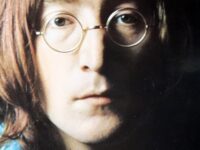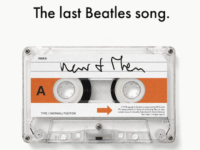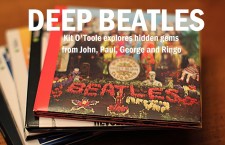by Nick DeRiso
John Lennon was a bundle of contradictions, both peacenik provocateur and tender tough guy.
He lived a life that was simultaneously brash and vulnerable, easy going and hard eyed. A flower child who was viciously murdered, Lennon’s story — and, indeed, his art — took twists and turns, made fits and starts, until the very end.
For fan Doyle Jeter of West Monroe, the journey was defined by two important signposts.
“He used his fame and fortune to preach peace and love; it’s an uncommon thing to do,” Jeter said. “When it comes to his music, even when he was pushing the limits, there’s no argument there. It will stand for 1,000 years.”
You may have loved Beatle John; you may have hated him. But you could scarcely ignore him.
Any celebration of his life would mirror that dichotomy, as Jeter has found.
He held the first John Lennon birthday celebration at the first Enoch’s in Monroe on Oct. 9, 1980, a matter of weeks before the former Beatle was killed by a deranged fan. Something that was initially a toss-off reason to play a few familiar old yeah-yeah-yeah records suddenly became this emotional celebration of a fallen musical hero.
But never, Jeter insisted, a wake.
“It became a tradition to keep it going, but if its not a birthday celebration, we don’t do it,” Jeter said. “It’s a celebration.”
Kenny Bill Stinson, then as now the bandleader for the Lennon night, joyously jumps from piano to guitar, guarding against the tendency to dirge-like sadness.
He’s perfect for it, since Stinson has an easy relationship with Lennon’s extremes — tossing off note-perfect takes on everything from the sweet and simple moments (“In My Life,” “Imagine”) to the dynamic and messy (“No. 9 Dream,” “I Am The Walrus”).
Time hasn’t dulled Stinson’s passion for Lennon’s music, even if the shows themselves typically feature the same cycle of songs. What a cycle they are, though: The free-love feedback of “I Feel Fine” gives way to spirited psychedelia like “Strawberry Fields Forever,” then it’s off to the out-sized optimism of “(Just Like) Starting Over.”
As popular as it eventually became — while Lennon moved into the mythical — Stinson was still performing from a perch in the corner of the most recent incarnation of Enoch’s, a tiny pub that once was a mid-town breakfast joint.
Nearly three decades later, the event has moved onto a bigger stage as part of the annual Northeast Louisiana Celtic Festival. “That John Lennon was of Irish decent made it the perfect match,” Jeter said.
Lennon, like Beatles bandmate Paul McCartney, had two Irish grandparents — including grandfather Jack, born in Dublin in 1858. And California-based Lennon biographer Jon Wiener said that Lennon “thought of himself as Irish.”
The venue might suggest the addition of “Sunday Bloody Sunday,” a Lennon song written in the aftermath of the massacre by British troops of civil rights protesters in Derry, Ireland. (Lennon’s 1972 album “Sometime in New York City” also included “The Luck of the Irish.” McCartney’s “Give Ireland Back to the Irish” was a hit the same year.)
The Beatles came from the Merseyside area of Liverpool, a suburb said to have the largest Irish population in England, chiefly because of an exodus during the Great Famine of the 1840s. They played Ireland three times, appearing in Dublin and Belfast in 1963 and then again in Belfast in 1964.
Jeter also remembers Lennon mentioning in some of his final interviews a dream to retire back to the Emerald Isle. The Celtic Festival Web site has explored Lennon’s Celtic connection, too: Lennon’s great-grandfather, also named John, made a living playing pubs in Northern Ireland, Jeter said.
- How Deep Cuts on ‘Music From Big Pink’ Underscore the Band’s Triumph - July 31, 2023
- How ‘Islands’ Signaled the Sad End of the Band’s Five-Man Edition - March 15, 2022
- The Band’s ‘Christmas Must Be Tonight’ Remains an Unjustly Overlooked Holiday Classic - December 25, 2016




